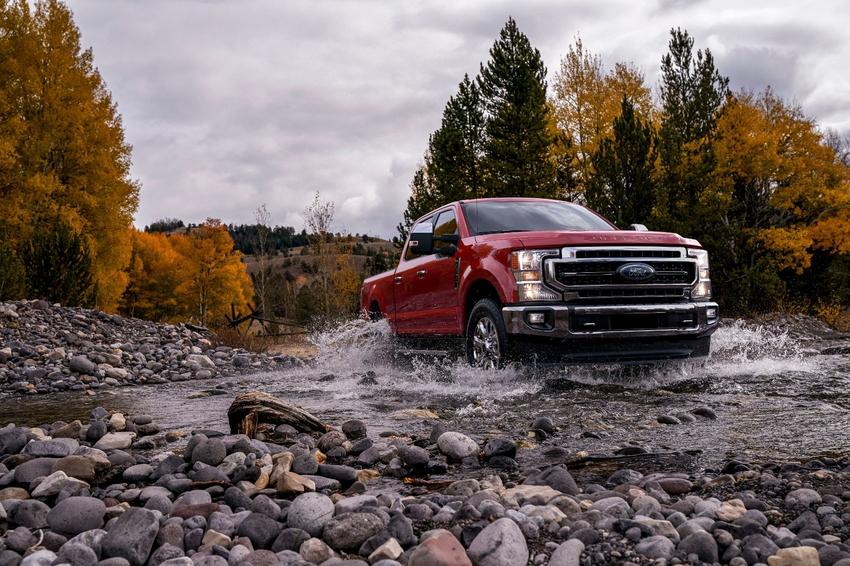According to Consumer Reports and IIHS, 65 used cars best suited for teenagers
Parents with teenage drivers: It’s okay to feel overwhelmed when your child is about to drive for the first time. When they start driving, it is normal to be confused about which vehicle is best for them. Although there are dozens of possibilities, this list of the best used cars for teenagers and novice drivers will help you.
Where The List Originated
How The List Was Determined
Braking & Handling Performance
Crash Testing & Safety
Difference Between Good & Best Choices
Best Choices
Small Cars
Midsize Cars
Large Cars
Small SUVs
Midsize SUVs
Minivans
Good Choices
Small Cars
Midsize Cars
Large Cars
Small SUVs
Midsize SUVs
Minivans
More Information & Free Helpful Resources
Where The List Originated
Consumer Reports (CR) and the Insurance Institute for Highway Safety (IIHS) worked together to determine the best used cars for teenagers. These organizations narrowed it down to the 65 vehicles listed below. Each vehicle on the list, whether a sedan, minivan, or crossover, has modern safety features and a generally good track record when it comes to reliability and affordability.
“Our focus has always been safety, as reflected in our vehicle ratings, but we recognize that a lot of other factors go into families’ purchasing decisions,” says IIHS President David Harkey. “This partnership with Consumer Reports will help new drivers and their parents zero in on the best used vehicles overall.”
How The List Was Determined
CR and IIHS divided their recommendations into two categories: Good Choices and Best Choices. Both choices had to meet predetermined safety, performance, and reliability standards set by the two organizations. One of the first requirements was that every vehicle has electronic stability or traction control, which will help a teenage driver during slippery and snowy conditions. Furthermore, every vehicle on the list has above-average reliability ratings and a curb weight no lower than 2,750 lbs.
Consumer Reports and the Insurance Institute for Highway Safety have developed a list of the best used cars for teenagers. The list of 65 vehicles takes into consideration things like safety, reliability, and affordability.
Braking & Handling Performance
CR leveraged vehicle satisfaction surveys from prior years and data from over 50 individual performance tests. Among those 50 performance tests are ones that focus on emergency handling and dry braking distances. Vehicles had to score better than 3 out of 5 on the emergency handling test and register a dry braking distance from 60 mph to zero of 145 feet or less.
If it helps to have a visual reference, 145 feet is about half of a football field. If your teenager has to brake suddenly, the vehicles on this list from CR and IIHS will give you more peace of mind.
Related: Will your auto insurance rate go down because of COVID-19?
Crash Testing & Safety
Each vehicle’s crashworthiness was determined in four separate IIHS tests: side, roof strength, head restraints, and moderate overlap front. Frontal tests are especially vital since it’s the scenario most likely to end in a severe injury or fatality. The danger comes after the initial impact in these types of frontal collisions. A vehicle is often propelled into oncoming traffic, which can cause a secondary collision worse than the initial impact.
During the moderate overlap frontal test, the driver’s side of the vehicle crashes into a barrier at 40 mph to test the vehicle’s airbags, seat belts, and strength of the occupant compartment. Vehicles must receive a Good rating from the IIHS to have a place on the list, be it a Good or Best choice. All the vehicles on both lists earn four or the full five stars from the National Highway Traffic Safety Administration for extra reassurance.
Difference Between Good & Best Choices
Along with all the safety and reliability aspects outlined above, owners of the vehicles considered Best Choices have not filed for higher than average claims in medical or personal injury protection. This research comes from the Highway Loss Data Institute, an IIHS affiliate, which publishes data relating to hundreds of different passenger vehicles under six specific insurance coverages. “Injury claims provide another window onto safety in the real world and may capture things that crash tests don’t,” Harkey added.
Best Choices also have a Good or Acceptable rating in the IIHS driver-side small overlap front test. This is designed to evaluate a vehicle’s response when the front left corner (driver’s side) hits another car or something like a tree or utility pole. In their research, the IIHS finds occupants move simultaneously forward and toward the vehicle’s side during these types of accidents. The resulting movements make it difficult for some safety systems, like airbags and seat belts, to respond appropriately.
Related: A brief history of the safety features in your car.
The vehicle’s outer edges are more susceptible in situations like this since they are not always fully protected by the crush-zone structures. In crashes of this type, the accident’s force can bypass the first line of defense (front crumple zones or crush zones) and go directly into the car’s interior parts: the front wheel, suspension system, and firewall, for example. This causes the vehicle’s cabin to bear the brunt of the impact, resulting in serious leg and foot injuries. The vehicles on the Best Choices list do well in these types of accidents based on IIHS research, receiving a Good or Acceptable rating.
Best Choices
Here are the Best Choices for teenagers and new drivers as determined by Consumer Reports
and the Insurance Institute for Highway Safety.The list is organized by vehicle type and size. Prices, provided by Kelley Blue Book and rounded to the nearest $100, are average U.S. values from July 1st, 2020, for the lowest trim level and earliest applicable model year. Based on private party selling, the estimates assume the vehicle is in good condition, with average mileage for the model year.
Small Cars
Mazda 3 (2014 or newer; built after October 2013) – $7,000
Subaru Impreza (2014 or newer) – $8,700
Hyundai Elantra GT (2018 or newer) – $14,000
Kia Forte (2019 or newer)- $14,600
Kia Niro (2018) – $15,400
Toyota Corolla hatchback (2019 or newer) – $15,800
Honda Insight (2019 or newer) – $17,900
Subaru Crosstrek (2018 or newer) – $18,700
Toyota Prius Prime (2017 or newer) – $18,700
Midsize Cars
Subaru Legacy (2013 or newer; built after August 2012) – $7,600
Subaru Outback (2013 or newer; built after August 2012) – $8,500
Honda Accord sedan and coupe (2013 or newer) – $9,200
Volkswagen Jetta (2016 – 2018) – $9,800
Mazda 6 (2015 or newer) – $10,500
Volkswagen Passat (2016 – 2018) – $11,000
Toyota Prius v (2015 – 2017) – $12,600
Lincoln MKZ (2016 or newer) – $13,300
Volvo S60 (2017 – 2018) – $15,300
Nissan Altima (2019 or newer) – $17,000

Audi A3 (2017, 2020) – $18,300
BMW 3 Series sedan (2017 or newer; built after November 2016) – $18,600
Large Cars
Hyundai Genesis (2015 – 2016) – $18,000
Small SUVs
Mazda CX-5 (2014 or newer; built after October 2013) – $8,200
Buick Encore (2016 or newer) – $10,700
Chevrolet Equinox (2016 or newer) – $12,100
Honda CR-V (2015 – 2016, 2019 or newer) – $12,200
Mazda CX-3 (2017 or newer) – $12,300
Subaru Forester (2016 or newer) – $12,500
Nissan Rogue (2017 or newer) – $13,400
Toyota RAV4 (2015 or newer; built after November 2014) – $13,800
Honda HR-V (2017 – 2018; built after March 2017) – $14,000
Hyundai Kona (2018 or newer) – $14,500
Audi Q3 (2016 or newer) – $17,300
Midsize SUVs
GMC Terrain (2014, 2016 or newer) – $9,400
Kia Sorento (2016 or newer) – $13,400
Nissan Murano (2015 or newer) – $13,800
Hyundai Santa Fe Sport (2017 – 2018) – $15,800
Hyundai Santa Fe (2017 or newer; built after March 2016) – $17,800
Mazda CX-9 (2017 or newer; built after November 2016) – $18,400
Lincoln MKX (2017 – 2018) – $19,600
Minivans
Toyota Sienna (2015 or newer) – $11,900
Honda Odyssey (2015 – 2016) – $12,400
Kia Sedona (2016 – 2017) – $12,600
Good Choices
Here are the Good Choices as determined by Consumer Reports and the Insurance Institute for Highway Safety.
The list is organized by vehicle type and size. Prices, provided by Kelley Blue Book and rounded to the nearest $100, are average U.S. values from July 1st, 2020, for the lowest trim level and earliest applicable model year. Based on private party selling, the estimates assume the vehicle is in good condition, with average mileage for the model year.
Small Cars
Mazda 3 (2011 – 2013) – $5,300
Honda Civic sedan (2012 – 2015) – $5,600
Toyota Corolla sedan (2012 or newer) – $6,800
Toyota Prius (2011 or newer) – $6,800
Midsize Cars
Subaru Legacy (2011 – 2012) – $5,700
Lincoln MKZ (2011 – 2012) – $6,000
Subaru Outback (2011 – 2012) – $6,600
Toyota Camry (2012 or newer) – $7,500
Toyota Prius v (2012 – 2014) – $7,800
Honda Accord sedan (2012) – $7,900
Hyundai Sonata (2015 – 2016) – $10,100
Large Cars
Ford Taurus (2011 – 2015) – $5,400
Hyundai Azera (2012 – 2014) – $7,200
Buick Regal (2015 – 2016) – $8,900
Small SUVs
Hyundai Tucson (2011 – 2015) – $5,400
Ford Escape (2015, 2018 – 2019) – $9,300
Kia Sportage (2015, 2018) – $10,200
Toyota RAV4 (2013 – 2014) – $10,900
Midsize SUVs
Toyota Venza (2009 – 2015) – $7,000
Toyota Highlander (2008 – 2019) – $7,800
Ford Edge (2014 – 2015) – $10,000
Minivans
Toyota Sienna (2011 – 2014) – $7,100
More Information & Free Helpful Resources
With this helpful search tool, you can shop for any of the 65 vehicles on this list. That search tool will show you which dealers in your area are giving you the best price.
Depending on how much your teenager will drive and how many miles are on the vehicle they are driving, an extended warranty could be beneficial. To help you make the best decision, we have thoroughly reviewed the top aftermarket warranty providers. Through these reviews, we answer the main questions and concerns about purchasing an extended warranty. We have done the same with the top car insurance providers.
While you are shopping for a used car for your teenager, be mindful of things like odometer rollback fraud and vehicle title fraud. If you are shopping for a new vehicle, it’s always helpful to know the difference between the MSRP and invoice price. And whether you are shopping for a new or used car, you can usually get a better deal over the holidays.
Emily Pruitt is fascinated by the current changes in the automotive industry, from electric cars and infrastructure to fully autonomous vehicles. Outside of the automotive world, she can be found writing poetry or unraveling the latest mystery novel.
*Although you are always free, Automoblog and its partners may be compensated when you visit the above link.
-
Latest
 2020 Ford Super Duty review: Ford raises the bar for heavy trucks
2020 Ford Super Duty review: Ford raises the bar for heavy trucks2020 Ford Super DutyIn Our Opinion:The 2020 Ford Super Duty faces fierce competition from GM and Ram, but new tech features for the Super Duty help raise the bar in Ford's favor. While we would recomm...
-
Next
 2019 Mercedes-Benz A-Class: Stoned Soul Picnics and Ventura Highways
2019 Mercedes-Benz A-Class: Stoned Soul Picnics and Ventura HighwaysCompact. Athletic. Trunk space. The ambient light has been for several days. If the 2019 Mercedes-Benz A-Class becomes a newspaper, these will make headlines. Savvy Mercedes-Benz enthusiasts may remem...
